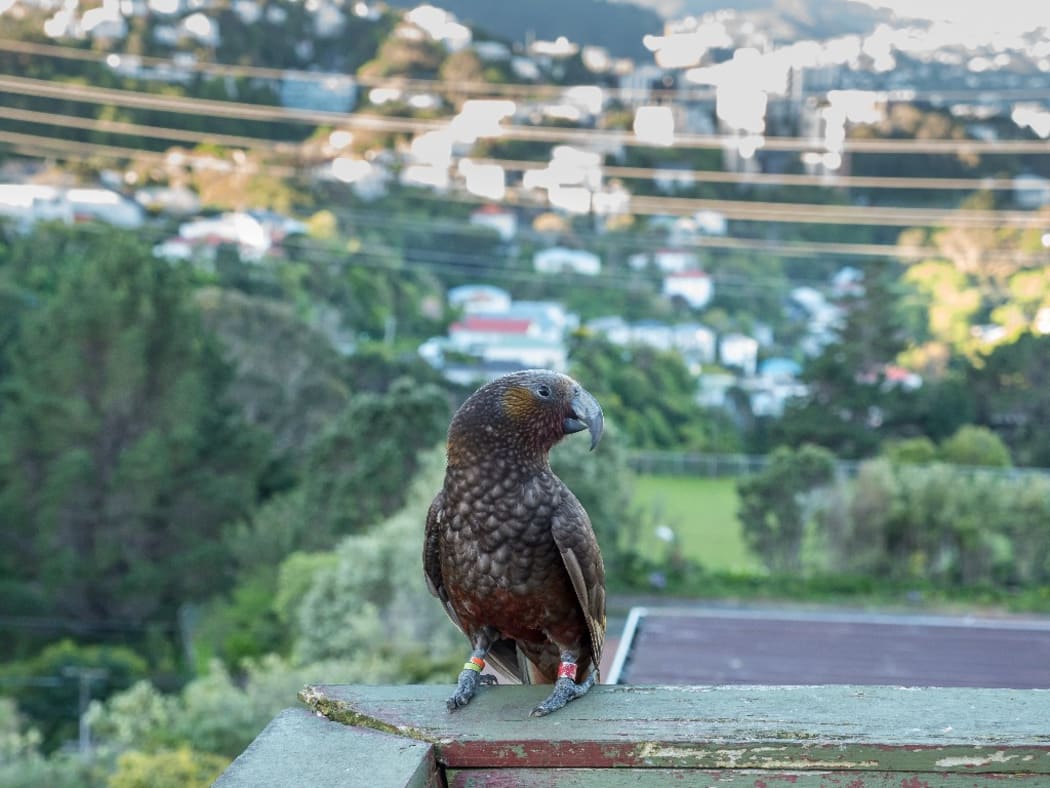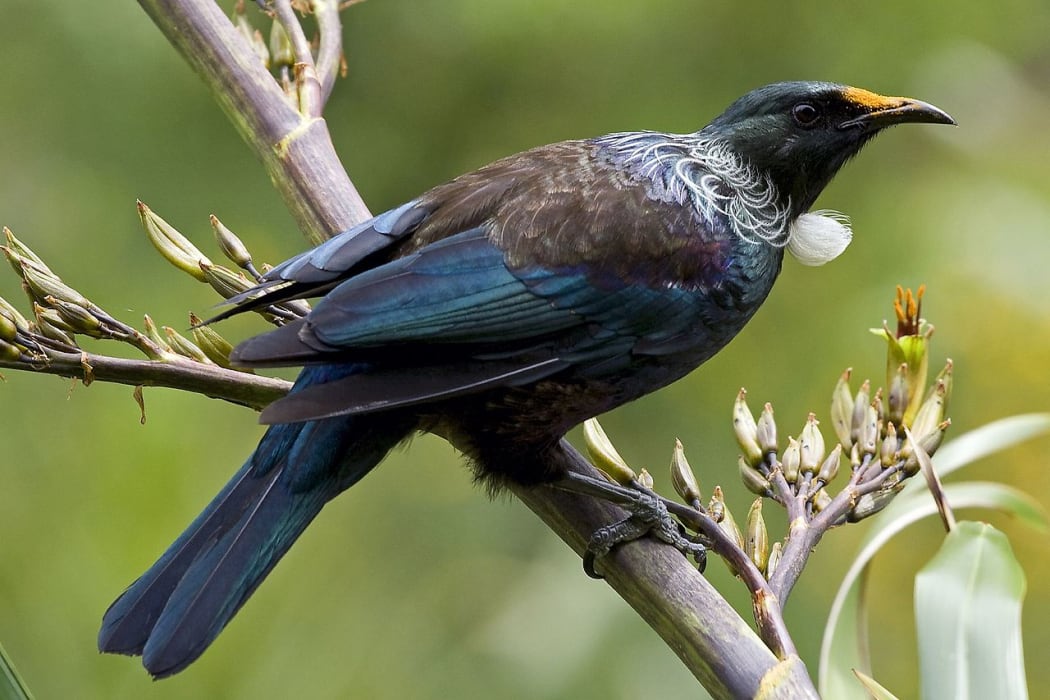Kākā, tūī and kākāriki are on the rise in the Capital.

A kākā in Wellington City. Photo: Judi Lapsley Miller
Plentiful urban bush and an enthusiastic network of neighbourhoods that are trapping rats and stoats as part of Predator Free Wellington are contributing to a renaissance in native forest bird numbers in the city’s parks and gardens.
Subscribe to Our Changing World for free on Apple Podcasts, Spotify, Stitcher, RadioPublic or wherever you listen to your podcasts
Every spring since 2011, a team of bird experts has headed out to 100 sites across Wellington’s parks and gardens to count birds, and Greater Wellington’s Philippa Crisp says the news they are bringing back is very positive.
“For three species we are pretty confident now that they’re increasing.”
The three urban bird species that are doing well are kākā, tui and kākāriki.
"All of those species are either increasing or stable." Philippa Crisp
Philippa says that “we have to thank Zealandia” for the growing numbers of North Island kākā, which are now a common sight and sound in central Wellington, including Parliament and the Botanic Gardens.

Kākāriki Photo: Supplied
Kākā were introduced to the predator-free fenced sanctuary between 2002 and 2007, and now roam widely. They even nest outside the fence, in places such as Polhill reserve.
Kākāriki or red-crowned parakeets are another city success story, spreading out not just from Zealandia but from Matiu-Somes Island in the middle of Wellington Harbour, and Mana Island just offshore from Porirua.
Tūī numbers were on the rise from the early 2000s, as a residual population began to benefit from predator-trapping efforts in reserves and gardens across the city.
Philippa says these initial trapping efforts have grown into a very successful Predator Free Wellington campaign, supported by Greater Wellington and the Wellington City Council.
Neighbourhood trapping groups have sprung up around the city, and between them they are killing thousands of rats, mice and hedgehogs each year, making the city a safer place for the birds.
Philippa says another key factor in the birds’ success are old growth forests such as that found in Ōtari Wilton’s bush and Khandallah park.
“It’s fantastic that Wellington saved these areas.”

Tūī love harakeke flax nectar. Photo: Matt Binns, Wikimedia Commons
The annual bird survey includes 18 forest species, all of which are either growing in numbers or remaining steady.
“The fact that all of those species are either increasing or stable I think is just really good news for a city.”
Ten years of garden bird survey results
Since 2007, Manaaki Whenua Landcare Research has enlisted the help of thousands of citizen scientists to count birds in gardens and parks across New Zealand.
An analysis of the first ten years of the New Zealand Garden Bird Survey has shown that counts of our most common native garden bird, the silvereye, have nearly halved over the decade.
Tūī and kererū numbers have increased slightly, while fantail and bellbird numbers are stable.
Introduced bird species are also declining in number, with the exception of the greenfinch whose numbers have doubled.


